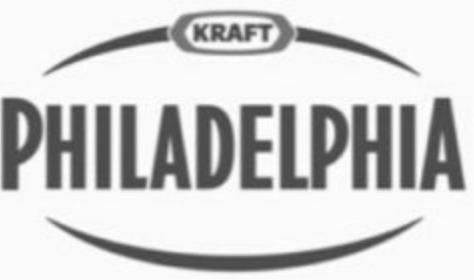Example of a Geographically Descriptive Trademark That Has Gained Secondary Meaning
The examples listed in What is the Trademark Supplemental Register inherently fail to identify a brand (business of origin), but rather identify a location of origin. The Trademark Act rarely grants monopolies for geographic terms. The exception is when the name acquires secondary meaning. That is, when the public readily associates the name with a brand, rather than the location. PHILADELPHIA Cream Cheese is such an example of a geographically descriptive trademark that has become distinctive through secondary meaning. In this case, the secondary meaning results from long and widespread use. The PHILADELPHIA trademark became a household name that identifies a particular source of cream cheese.
PHILADELPHIA Cream Cheese Is an Example of a Geographically Descriptive Trademark That Has Gained Secondary Meaning.
A great example of a Supplemental Register mark on the Principal Register is PHILADELPHIA Cream Cheese.

The word PHILADELPHIA is geographically descriptive. It describes a geographical location, and is therefore not capable of functioning as a trademark. This is hornbook trademark law. The exception is when the mark – PHILADELPHIA – is used so much, so consistently, nationwide, since 1880. This long standing, consistent, and widespread use of PHILADELPHIA has resulted in the name achieving “secondary meaning” among the public. There is widespread public recognition that PHILADELPHIA is a source identifier for cream cheese. This explains why the word PHIALDELPHIA is a trademark on the principal register, while many other “Philadelphia” marks are on the Supplemental Register.
